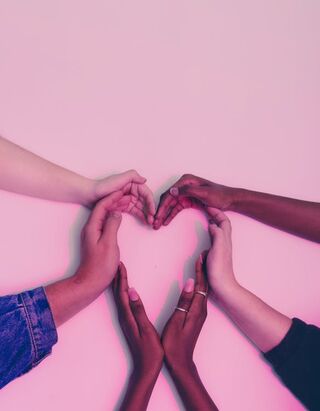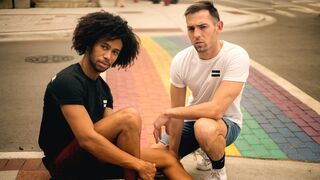Bias
4 Commonly Overlooked Forms of Discrimination
Discrimination isn't always obvious; here are a few forms you may have missed.
Posted June 6, 2020 Reviewed by Gary Drevitch

Sometimes discrimination is easy to spot. Many forms of unfair treatment toward an individual of a certain group are hard to deny. The most obvious examples may include acts of violence or offensive slurs. However, some conduits for discrimination are rather sneaky. For the offending individual, without recognizing that the chosen language or behavior could fall within the realm of discrimination, the need for change may be overlooked altogether. For the targeted individual, not recognizing these forms can cause a confusing experience in which the effects are felt without an understanding of why. The inability to recognize these insidious forms can help discrimination and its deteriorating consequences to perpetuate. Here are four forms to help you broaden your definition of discrimination.
1. Bias. Biases are flaws in the way we may process information. Often this is because our mind tends to utilize shortcuts to digest data quickly. In the realm of social psychology, researchers have highlighted that these biases my have once been relatively adaptive for human survival. For example, living in groups was helpful for protection, while outsiders were deemed as threats. Thousands of years ago this quick processing may have helped to protect scarce resources and assure safety.
All humans have bias. Yes, regardless of your characteristics, nation of birth, income bracket, or views about life and meaning—you have bias. Some biases can be rather harmless. What type of pizza do you like? I have a bias for New York-style pizza. If you ask me why, I’d likely say, “Well, it’s the best.” If I’m willing to take a deeper look, having been born in New York and spending my early years in an apartment above a pizzeria may have had some influence on my personal preference. While we may disagree, it does not broach the realm of violence. On the other hand, biases beyond the simplicity of preferred slice can cloud our judgment and create complex consequences. This can especially be the case when biases contradict human rights.
Without a willingness to recognize and refute biases, this discrimination can grow. Unchecked bias can evolve into prejudice (judgments toward a specific group). In addition, unchecked bias can permeate fabric of society. While it may be one thing for a single person to overlook personal bias, a number of individuals doing the same can cause it to grow into forms of cultural or institutionalized bias.
Psychologist Maureen McHugh highlights an example of bias pertaining to sizeism. McHugh notes that a “medicalized view of weight conceptualizes fatness as a disease and weight loss as a cure.” From this weight-centric view there is the assumption that weight is within an individual’s control, is associated with health habits, and that ultimately weight loss equates to better health. This framework has been common in the medical community for years. Over time, this known sizeism can cause misdiagnosis by the medical professional or help-seeking avoidance in patients. However, a medical professional who recognizes this bias and is willing to share this perspective with patients and colleagues can create a wave of change that can begin to counter the traditional, biased perspective.
While there may be a temptation to think you are without bias, it actually helps to acknowledge your biases. When you take a look at your biases, you can examine how they arose. Denying bias bars change, while awareness can help you challenge your own biases. The courage to challenge your own biases allows you advocate for the prevention of biases evolving into larger concerns of prejudice. If you are willing to take the next step, you may find it helpful to take a moment to explore this list.
2. Microaggressions. Microagressions are demeaning messages made to a person related to a group in which they belong. Often the membership pertains to a minority group. Don’t be fooled by the name: "micro" acknowledges that this form of bias is not overt; it does not allude to diminished hurt experienced by the recipient. Examples of microaggressions include statements such as “You don’t look gay,” or “You are so articulate for being a (insert ethnic minority group).” Sometimes microaggressions do not even need to be verbalized, such as a clerk following a person of color throughout a store or an employer being drawn to a resume by the name rather than merit.
One way microaggressions can be tricky is that the person stating the message can be well-intended. Sometimes these insults can be so discrete that not only does the person stating them not recognize the underlying discrimination, but even the individual on the receiving end may not recognize the invalidation in the moment. In addition, microaggressions can be confusing for the recipient as they may seem like compliments, yet they minimize the group to which that person belongs. On top of this, microaggressions are often claimed to be “just a joke.” This is a particularly common rebuttal when someone highlights the hidden offense within a microagression. Unfortunately, the presence of laughter does not always nullify the harm, even when the recipient laughs along. Laughter could be an automatic response tethered to an underlying defense mechanism intended to diffuse the discomfort of the situation.

3. Secondary trauma. Trauma is an emotional response to a horrific event, such as an overt act of discrimination. Responses may vary; however, shortly after the event it is common to experience shock and denial. Following the event, sentiments such as sadness, shame, anger, and fear may surface. As time progresses, an individual may experience long-term consequences such as flashbacks, headaches, nausea, and difficulty regulating emotions and relationships.
Secondary trauma is when someone experiences similar consequences to those noted above as a result of being exposed to the account of another person’s trauma. This may arise when we care for someone who has experienced trauma, especially when their trauma narrative has been shared. Sometimes referred to as vicarious trauma, secondary trauma may include that the traumatic event was not discussed, but witnessed. Symptoms of secondary trauma mimic direct trauma responses; such consequences may include nightmares, hyperarousal, and hypervigilance. Therefore, you do not need to directly experience an overt act of discrimination to experience negative consequences. This form of trauma can be overlooked as a type of discrimination by society but even by the individual experiencing the consequences. Instead, it is common to minimize events that did not occur to the individual directly. However, through the lens of Albert Bandura’s social learning theory, one does not need to be the target of discrimination to experience the oppressive consequences; witnessing the pain of discrimination to another can become an internalized lesson. With that lesson, the effects of trauma can be absorbed as well.
Anyone can be susceptible to secondary trauma. However, individuals who experience prolonged exposure to multiple accounts of trauma are particularly at risk. These may include parents, family members, friends, and allies who make space for their loved one to share their lived experience. This can also include individuals exposed to traumatic events as part of their profession, such as first responders, mental health clinicians, clergy, and journalists. From this view, an individual’s trauma can become a collective, community trauma.
4. Minority stress. Stress is a normal part of life that affects us all; however, it is a subjective experience. According to Lazarus and Folkman, stress may arise from internal factors (e.g., personality, abilities) and/or external factors (e.g., workplace, society). Ilan Meyer highlights that individuals within marginalized groups experience a chronic sense of stress simply by being themselves. The minority stress model acknowledges that in addition to internal and external stressors, a third realm of stress comes from expectations associated with minority status in society. Examples of these stressors include, but are not limited to, internalized prejudice, worries about perception, fears of rejection, the pressure to conceal identity, and the fear of safety. In addition, from an intersectional perspective, this is amplified for individuals who hold multiple minority identities (e.g., trans person of color).
The concept of secondary trauma helps us understand how exposure to accounts of trauma can impact another individual. The minority stress model builds on this concept by emphasizing that not knowing the individual who is directly impacted does not make you impenetrable to consequences. From this view, for a minority individual, recognizing discrimination toward someone who identifies with the same minority identity can elicit stress. This framework is helpful for us all because it expands the understanding of stress from an individual level, and promotes us to widen our lens to recognize the reality of systemic oppression and how it affects well-being (e.g., hate crimes, intergenerational traumas, social injustices). For minority individuals, this model highlights that the depth of your understanding and empathy comes with the natural consequence of increased stress.

Discrimination is often marketed as an overt, obvious act of prejudice. While that may be true, the breath of discrimination spans much wider. The four forms selected here are certainly not the only overlooked forms of discrimination; however, from my experience as a mental health counselor, educator, and advocate who focuses on diversity matters, these are among the most commonly overlooked forms. At the least, perhaps this validates the lived experience of those of you who may not have the privilege of overlooking these forms. At best, perhaps this expands the concept of discrimination for those of you who have not considered these concepts as forms of discrimination. As Maya Angelou once said, “Do the best you can until you know better. Then when you know better, do better.” If you believe in human rights, acknowledging that these forms are a common reality for many charges us to consider how we can do better to promote the mental wellness of ourselves and our global community.




